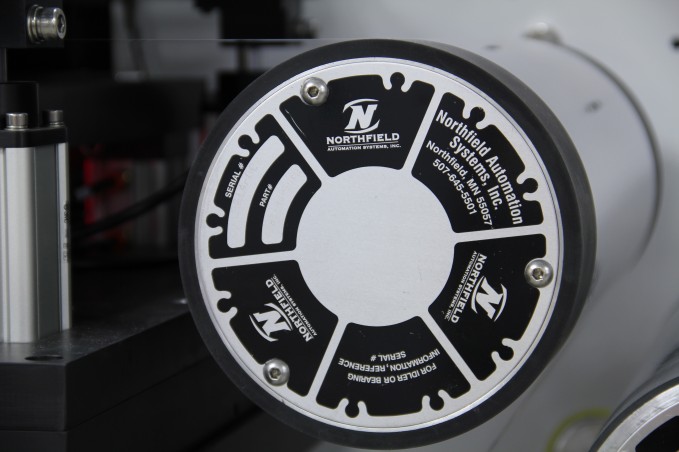At Northfield Automations Systems roll-to-roll handling has been central to our success in helping manufacturing companies automate their processes. Over the past few years, we’ve helped manufacturing companies discover new ways to apply this technology to improve cost savings with both labor and yield, efficiency and precision control of their sensitive material / product. Our depth of experience with roll-to-roll positions us to create extremely effective solutions for almost any application.
Understanding Roll-to-roll Processing
In roll-to-roll processing, flexible / rolled material is either intermittently or continuously driven in a controlled speed, tension and alignment. Through this automated manufacturing process, the substrate is advanced through a variety of roller layouts to create a web path best suited for additive or subtractive process applications or additive fabrication to be carried out onto the base material – whether that’s embedding, ablating, metallizing, laminating, printing, developing, etching, stripping, plating, coating, etc. Roll-to-roll processing is a promising choice for a variety of industries or applications because it’s most efficient and economical. This material handling method is also a great choice when precision control of thin / sensitive materials are required, or high volume manufacturing is needed at the best economical method.
Benefits of Roll-to-Roll Handling
Creating Efficiencies in Fuel Cell Manufacturing
With the emerging markets related to energy storage and fuel cells, unique materials are becoming more common. The utilization of metal mesh in roll form has its specific requirements for handling and control, as do the many sensitive films, foils and substrates that we have worked with over the years. Designing for the specific needs of this material is just part of the overall process solution that Northfield Automation Systems is working on with one of our customers. Integrating this with the various in-line process steps is a common practice for the turnkey process solutions that we provide. Even though the material is unique in its properties, the proper designed handling allows for controlled performance throughout the overall automated process line solution. Combining multiple layers of material to create a product roll for processing is yet another adaptation of how roll-to-roll automation in web handling helps optimize the yield of the material through the multiple process steps to build the final product.
Automation in Controlled Environments
Many applications of automation technology in manufacturing require controlled environments. Examples include vacuum chambers, HEPA-controlled environments, nitrogen environments, and safety enclosures. The automation of processes such as single / double-sided lamination, curing, photolithography, line-scan inspections, or laser marking, which previously required manual handling or multiple processes are simplified by roll-to-roll handling allowing for a safe, cleaner and more controlled manufacturing environment.
Web to Panel Automation for High-Volume Manufacturing
With the continued advancement of automation and the implementation of it within manufacturing environments, the smaller, thinner, more sensitive materials require very delicate and controlled handling during processing. The best way to perform high-volume controlled manufacturing is roll-to-roll. This allows for process parameters to be maintained throughout the entire handling of a roll of material at the various process steps throughout the buildup of that product. In making such a conversion, Northfield Automation Systems designed and built a web-to-panel process machine that converts the roll of material to precisely dimensioned panels. This allows for the material process manufacturing floor to convert each process step over to roll-to-roll and panelize after the last roll-to-roll process until all of the process steps are converted to roll-to-roll. The machine can then be used for the final loading of the panels into totes and includes the capabilities for vision inspection and laser serialization. In the end the manufacturer now has a process machine that solved multiple needs with a single capital investment.
Interested in learning more? Contact us today.


